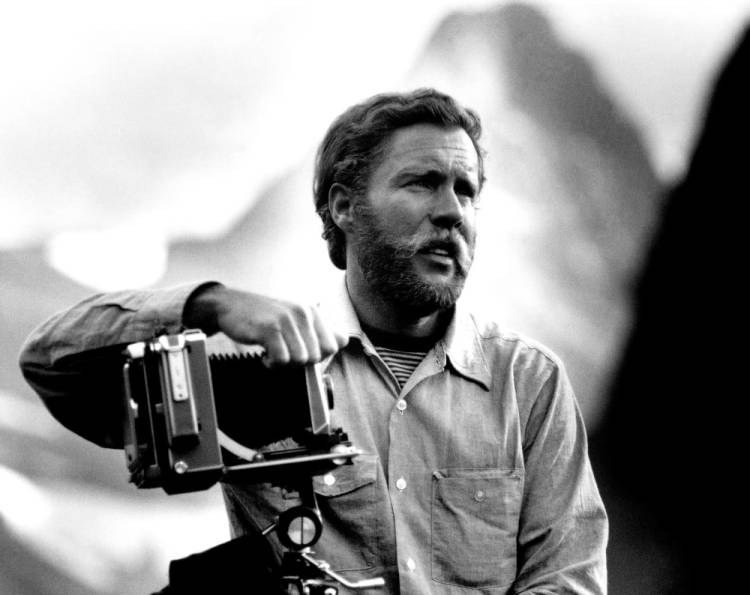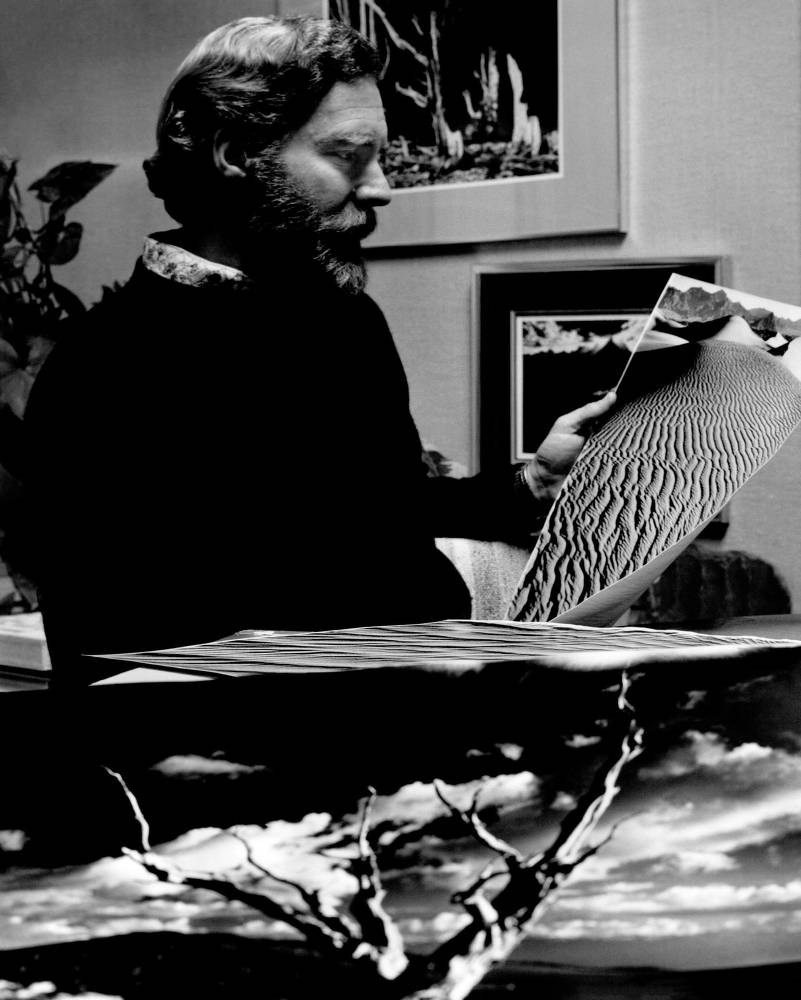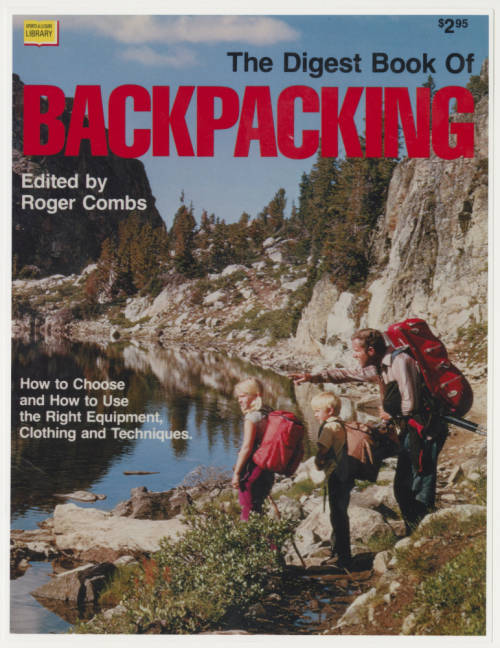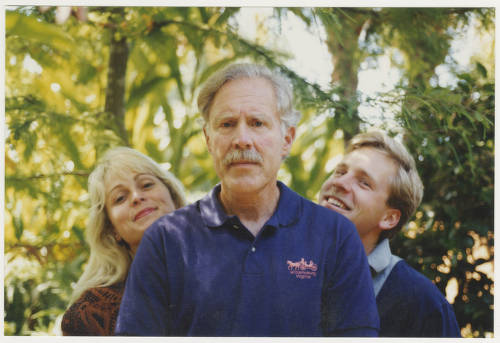The Man, as Artist
Given that he attended art school in the 1950s, it is no surprise that David Muench aspires to have his work stand alone, without explanation. He speaks about technique and composition before he speaks about his personal motivations or experiences. In interviews, Muench is far more giving in conversations about his process for either taking a photograph or developing the film than in conversations aimed to learn more about his life or his personal ties to a place or an image. For Muench, everything is already embedded in the image. Spending enough time with it will reveal its secrets. In his opinion, a story of his own to go along with the picture does not change its artistic value, particularly not when countless other stories about his photographs could be told by more seasoned writers.

David Muench completed his formal education at the University of California in Santa Barbara, the Rochester Institute of Technology in New York, and Art Center School of Design in California, where he graduated with a degree in illustration and advertising. His early love for photography stems from his father, Josef Muench, who was also a well-respected landscape photographer. David Muench enjoyed the process of film photography: lugging his gear into various national parks, finding his location somewhere along the way, and waiting for a picture that only he would be able to articulate. Muench always looked for something unique and ephemeral, a moment which inspires awe but is difficult to capture, a photograph that was better than an overexposed, rushed image that could never do the fleeting memory justice.
Muench experimented with constantly innovating technology for cameras and film photography throughout his career. He eventually shifted to digital photography in the early 2000s. At the beginning of his career, David Muench tried a number of different cameras and formats including 8×10″ and 11×14″ film, but he always came back to the 4×5″ format. In the 1990s, Muench played around with 35mm film, hoping it would help reduce the weight of film while he was traveling. None of these changes stuck. Even with instantaneous set up and built-in image storage for digital cameras, there was something about the tangible process of film development, finally seeing the shot come through, that made Muench return to film photography. It was only in 2006 when he began doing instructional workshops more frequently than he did his own solo trips that Muench made the permanent switch to digital cameras. This explains why his recent work is mostly born-digital.

“The sounds of wind, earth, and sky fill my ears, but it is the powerful silence of the desert that tugs at my unconscious, inspires my imagination, until both the abstract and the real are perceived.”
– David Muench, Eternal Desert (1990), pg. 32.
As of 2025, David Muench resides in Montana with his wife, author Ruth Rudner.
The Art, as Business
David Muench’s formalist art philosophy may have impacted the way he was perceived as an artist. Formalism means Muench’s focus was on the image itself and its visual elements, not on its meaning or his embedded emotion. This mindset, coupled with his subject matter of landscapes, shoehorned Muench into being a more commercial artist. While he had no trouble at all finding magazines and books to publish his work, he struggled to get acknowledgement from the fine art world at the same scale. A few of Muench’s notable exhibitions include “Timeless Moments” (2016), “Dual Visions” (2001), and “Arizona Highways: Celebrating the Tradition” (2000). He also published approximately 70 exhibit-style photography books. His images have been used on almost everything – calendars, posters, puzzles. There’s probably a rug out there sporting Hovenweep Storm somewhere.

Another part of the balancing act between art and business is the money factor. David Muench and his first wife, Bonnie Nelby Muench, formed David Muench Photography Inc. (DMPI) in 1964. DMPI incorporated in California in 1978. In 1970, Muench published his first book (with fellow photographer Ray Atkeson) about his home state, California. He stayed on a consistent publishing pace, releasing a book a year for nearly three decades, each year receiving royalties from different publishers. Muench primarily sold his photographic prints through galleries and portfolios during this time. He would create 150 or 250 signed edition prints, typically priced starting at $750 for a 16×20″ print and $2000-3000 for a 24×30″ print. As fewer and fewer prints remained to be sold, the price of those which were left rose, making each one unique and a little bit more valuable.
In 2000, after David and Bonnie Muench divorced, David Muench Photography Inc. (DMPI) became Muench Photography Inc. (MPI). David and his son, landscape photographer Marc Muench, decided to start doing instructional workshops together, first nationally and then internationally as they rolled into the 2010s. It was also around this time that MPI began putting together the website davidmuenchphotography.com to expand David Muench’s audience and reach. At this point, his prices reached $2,500 for a 16×20″ print and upwards of $5000 for a 40×60″ print. Keeping in mind his continued work for other publications and organizations, such as stock image companies, magazine issues which used a photo or two, or new batches of photographic calendars each year, each of these revenue streams added up to making a successful, profitable business for David Muench and his family members.
The Business, as Family
David Muench could not have focused almost exclusively on his photography and travel without the rest of the Muench clan supporting him. His first wife, Bonnie Nelby Muench, handled the administrative side of the business. She designed a number of his early books, particularly state-specific books like Utah (1973). His current and second wife, Ruth Rudner, similarly has written essays to accompany his photographs in books and magazines. Rudner contributed to Windstone (2003) and David Muench’s National Parks (2013), among other titles. His children, Zandria Muench Belardo and Marc Muench, were instrumental players in David Muench Photography Inc. and Muench Photography Inc. on top of following their own individual passions for photography.
With the development of digital photography also came the accessibility of the internet. Seeing an opportunity for a wider market and audience, his children pushed David Muench to start digitizing his work for the effort of building a website. Before this, the main way of selling his prints was through physical gallery spaces. Zandria, the oldest, handled almost all of the digitization of his photographic transparencies and organization of physical and digital files. Marc Muench handled a lot of the coordinating for solo and joint events and publishing. He collaborated with his father as artists for the books Muench: American Portfolios (1994) and Primal Forces (2000). Marc and David Muench also co-taught photography workshops from 2005 through 2016, traveling together internationally to scenic locations with groups of interested photographers.

Although photography seems to be baked into the Muench genetic code, different strategies and obsessions drive each family member. Muench’s father Josef was also a landscape photographer who focused on a similar regional subject matter and who had similar commercial clients, like Arizona Highways. David’s primary interest was in the art itself: the process, the material, the timing, the luck. He was not particularly interested in the business aspects of his art, as long as the business allowed him to keep working. Marc and Zandria both deviated farther from their father than David did from Josef; they were the first generation of Muenches to focus primarily on figural subjects. Marc Muench documents adventure sports like rock climbing and river rafting. Zandria Muench Beraldo has made herself a niche in pet portraits, primarily dogs, and wildflower photography.
